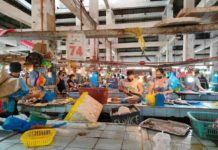
[av_one_full first min_height=” vertical_alignment=” space=” custom_margin=” margin=’0px’ padding=’0px’ border=” border_color=” radius=’0px’ background_color=” src=” background_position=’top left’ background_repeat=’no-repeat’ animation=”]
[av_heading heading=’Ministers crafting Code of Conduct in South China Sea’ tag=’h3′ style=’blockquote modern-quote’ size=” subheading_active=’subheading_below’ subheading_size=’15’ padding=’10’ color=” custom_font=”][/av_heading]
[av_textblock size=” font_color=’custom’ color=’#0a0a0a’]
Thursday, February 23, 2017
[/av_textblock]
[av_textblock size=” font_color=’custom’ color=’#0a0a0a’]
BORACAY – The Association of Southeast Asian Nations (Asean) is more determined to come up with a Code of Conduct at the South China Sea, according to the Department of Foreign Affairs (DFA).
The Code shall be legally binding, DFA undersecretary Enrique Manalo told a press briefing.
“There is no change in the Asean position,” Manalo stressed.
Member countries are more resolved in finalizing the Code and proceeding to actual negotiations as soon as possible, and fully carrying out the Declaration on the Conduct of Parties in the South China Sea (DOC).
“So work is expected to be even more intense this year,” said Manalo.
Article 5 of the DOC states that parties should “exercise self-restraint in the conduct of activities that would complicate or escalate disputes and affect peace and stability” in the disputed waters, he said.
But the DOC is not binding.
On the other hand the COC shall be a binding document aimed at ensuring peace and stability in the South China Sea, parts of which the Philippines claims as the West Philippine Sea. (PIA/PN)
[/av_textblock]
[/av_one_full]



